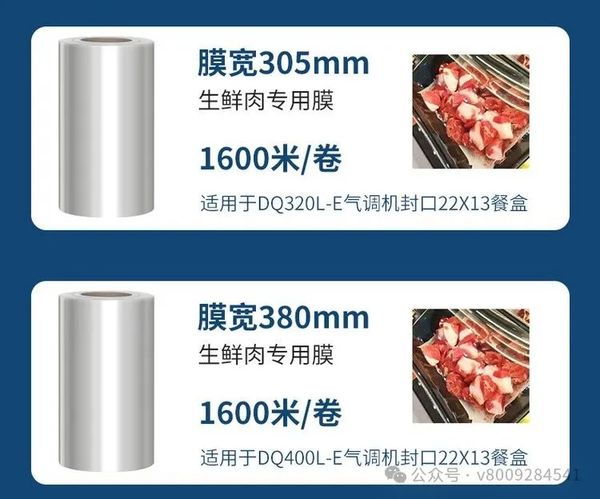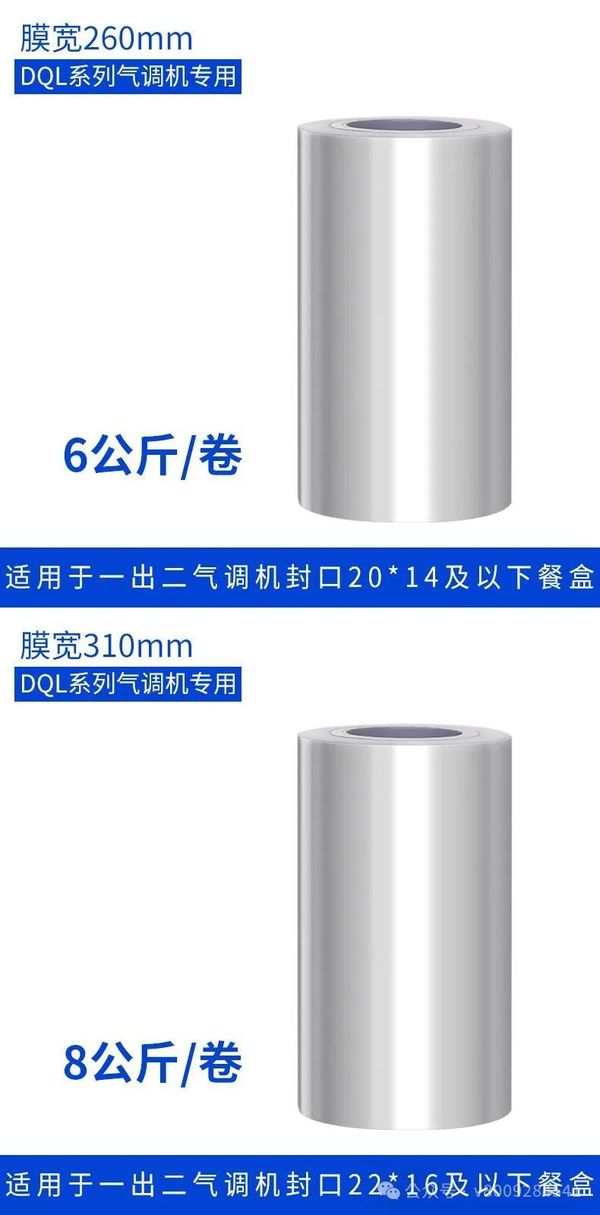Analysis of Modified Atmosphere Packaging Film Technology: Structural Design, Material Innovation, and Optimization of Food Preservation Processes
Analysis of Modified Atmosphere Packaging Film Technology: Structural Design, Material Innovation, and Food Preservation Process Optimization
Research on the Development of High Barrier and Functionalized Food Packaging Films
1. Structure and Function Design of Air Conditioning Membrane
Modified Atmosphere Packaging (MAP) film achieves selective gas permeation through a multi-layer composite structure, typically consisting of a barrier layer, functional layer, and heat-sealing layer.
Barrier Layer (Modified Atmosphere Layer)
Usually made of high-barrier materials (such as EVOH, PA, PVDC), they regulate the permeability of oxygen (O₂), carbon dioxide (CO₂), and water vapor (H₂O) to create a low-oxygen, high-carbon dioxide environment, which inhibits the respiration of fruits and vegetables.
Function layer
Add active ingredients such as antimicrobial agents, oxygen absorbers, or ethylene adsorbents to enhance preservation effects. For example, polylactic acid (PLA) based films are used for fresh food packaging due to their natural antibacterial properties.
3. Heat-sealing layer
Most are made of polyethylene (PE) or polypropylene (PP), ensuring packaging sealability while providing flexibility.
Thickness design: The total thickness is typically 15-50 micrometers, with the thickness of each layer adjusted according to functional requirements. For example, the EVOH barrier layer accounts for only 5-10 micrometers, while the heat seal layer requires 10-20 micrometers to ensure strength.

II. Material Selection and Technological Development Trends
Traditional materials:
PA (Polyamide): High mechanical strength, puncture resistance, suitable for meat packaging.
EVOH (ethylene-vinyl alcohol copolymer): Excellent oxygen barrier properties (oxygen permeability <1 cm³/m²·day·atm), but humidity sensitive, needs to be compounded with PE for use.
PVDC (Polyvinylidene Chloride): It has both high barrier properties and moisture resistance, but is environmentally poor and is gradually being replaced.
2. Biodegradable materials:
PLA (polylactic acid) has an oxygen permeability about 10 times higher than that of PE, and a higher CO₂ permeability, making it suitable for fruit and vegetable preservation; however, its insufficient strength needs to be compensated for by multi-layer composite structures.
PBS (polybutylene succinate): When compounded with PLGA (glycolide-lactide copolymer), it can regulate the gas permeability coefficient and enhance degradation performance.
3. Nanocomposites:
Adding nano clay, graphene, etc., enhances barrier properties. For example, SiO₂ nanoparticles combined with PLA can reduce oxygen permeability by 30%.
III. Key Parameters of Modified Atmosphere Packaging Process
Gas ratio control:
Fruits and vegetables: low O₂ (2-5%), high CO₂ (5-10%), inhibiting respiration.
Meat: High O₂ (70-80%) maintains color, or CO₂/N₂ mixed gases inhibit microorganisms.
2. Equipment and Process:
Vacuum inflation technology: Replace the gas inside the packaging with a vacuum and fill it with a preset mixed gas.
Heat sealing parameters: temperature (120-150°C), pressure (0.3-0.5 MPa), and time (1-2 seconds) must be precisely controlled to avoid seal leakage.
3. Intelligent Controlled Atmosphere Technology:
Use active packaging (such as oxygen indicator labels) or microporous membranes (automatically adjust air permeability in response to temperature changes) to achieve dynamic gas regulation.

Four, market applications and competitive landscape
1. Main application areas:
Fresh meat and processed meat products: accounting for about 40%, mainly using high barrier PA/EVOH composite film.
Fruit and vegetable preservation: Demand for PLA-based films grows, with the market size reaching 1.2 billion yuan in 2023, and an annual growth rate of 18%.
Dairy Products: Moisture-proof and oxygen-barrier films (such as PVDC/PE) are used for cheese and yogurt packaging.
2. Regional Distribution:
The Yangtze River Delta region accounts for 45% of the market in China, dominated by companies such as Nantong Global and Altamir.
The export-oriented model predominates in the South China region, focusing on the Southeast Asian fresh produce market.
3. Competitive situation:
CR5 concentration is about 50%, with leading enterprises expanding their advantages through technological upgrades (such as biodegradable films), while small and medium-sized enterprises focus on the low-end market.
Five, Future Technological Challenges and Innovation Directions
1. Process optimization: Develop low-cost drying technologies (such as atmospheric drying) to replace the supercritical CO₂ process, promoting the large-scale production of modified atmosphere films.
2. Functional integration: Develop an "integrated" modified atmosphere film that combines antibacterial, moisture-absorbing, and smart sensing functions.
3. Environmental Trend: The EU plastic ban drives the development of PLA/PBS-based films, with biodegradable films expected to account for over 30% by 2030.
【Copyright and Disclaimer】The above information is collected and organized by PlastMatch. The copyright belongs to the original author. This article is reprinted for the purpose of providing more information, and it does not imply that PlastMatch endorses the views expressed in the article or guarantees its accuracy. If there are any errors in the source attribution or if your legitimate rights have been infringed, please contact us, and we will promptly correct or remove the content. If other media, websites, or individuals use the aforementioned content, they must clearly indicate the original source and origin of the work and assume legal responsibility on their own.
Most Popular
-

List Released! Mexico Announces 50% Tariff On 1,371 China Product Categories
-

Dow, Wanhua, Huntsman Intensively Raise Prices! Who Controls the Global MDI Prices?
-

Clariant Unveils Cost-Cutting Plan Details, Plans to Shut Down Multiple Plants
-

New Breakthrough in Domestic Adiponitrile! Observing the Rise of China's Nylon Industry Chain from Tianchen Qixiang's Production
-

Nissan Cuts Production of New Leaf EV in Half Due to Battery Shortage






